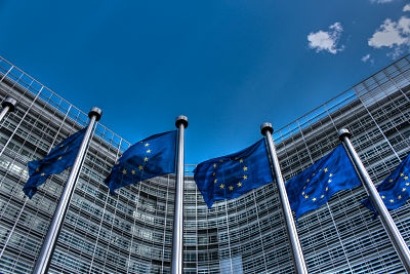
To achieve climate neutrality, the EU must rapidly accelerate the rate of building decarbonisation. It must stop ‘playing small’: Energy Performance of Buildings Directive (EPBD) is crucial to reduce harmful emissions from buildings.
After a two-and-a-half-year process, negotiations on the EPBD recast are expected to close by the end of this year, with an agreement on a final text.
“As the main legislative instrument to advance the decarbonisation of buildings in the EU, the Energy Performance of Buildings Directive (EPBD) must unequivocally put us on the path to meet our 2030 targets and climate neutrality” said Oliver Rapf, Executive Director of BPIE.
Bold and unambiguous EPBD provisions are paramount to tackle the gaping lack of progress in the decarbonisation of the EU building stock, the report says.
To deliver Europe’s renovation wave, minimum energy performance standards (MEPS) should be designed to address the worst-performing buildings first, establishing clear milestones and timelines. For new buildings, the future zero-emissions buildings (ZEB) standard must prohibit the use of fossil fuel heating systems.
Developed by the Buildings Performance Institute Europe (BPIE), the EU BCT monitors progress of the building stock in the European Union towards the goal of achieving climate neutrality by 2050 in the form of an index, covering the period from 2015 until 2020. This year’s edition includes an EU wide and a specific analysis on Central & Eastern Europe (CEE).
Compared to last year’s results, the decarbonisation gap is reducing slightly, but not to the degree necessary to bring the sector on track towards climate neutrality. The tracker’s value for 2020 should be at 18.1 points but is only at 7.8, resulting in a gap of over 10 decarbonisation points. Based on the current situation, 4.7 points of progress in the decarbonisation of the EU building stock are required every year to get on track by 2030.
The analysis for the CEE countries shows an even more worrying trend: by 2020 the progress to decarbonise the building stock is 21 points off the required decarbonisation path, the largest gap since the beginning of the tracker period in 2015. This requires a significant increase of efforts to implement effective policies in the near future. Based on the current situation, 5.7 points of progress in decarbonisation are required every year in the CEE region to get on track by 2030.
The tracker corresponds to an index composed of a set of five indicators monitoring CO2 emissions, final energy consumption, renewable energy share, investments in renovation, and domestic energy expenditures. When looking at the progress between 2015 and 2020, the results for most of the indicators show a gap between the current status and the values required to be on track towards climate neutrality.
In 2020, CO2 emissions from energy use in buildings reached 422 Mt CO2, more than 18 percent higher than the required goal value. The reduction of CO2 emissions from the EU building stock is clearly off track.
The share of renewable energies for heating and cooling was around 30 percent lower than required, which calls for a clearer roadmap to decarbonise the heating and cooling sector.
Accumulated investments in renovation in 2020 were 40 percent lower than required.
Energy expenditures per household were close to achieving the targeted values in 2020, but the subsequent increase in energy prices may negatively impact this indicator. The consequences of not reducing household energy expenditures can be significant, especially in regions with high energy poverty levels like the CEE region, where household energy expenditure was already 6.3 percent higher than the required value in 2020.
For additional information:

